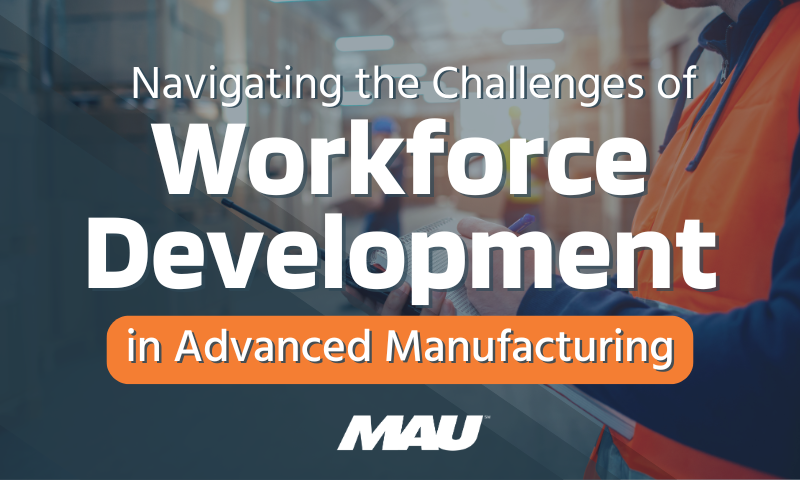This is part eight of a 10-part series designed to help you transform your company, gain a competitive advantage, and sustain long-term business success. In part 7, we showed you the benefits of outsourcing your recruitment process.
Today, we’re going to introduce you to three additional outsource opportunities that can help you make your business more competitive.
To kick off today’s conversation, I’d like to start with three questions:
1) Would you consider letting a partner manage a pilot program for you?
2) How should you ramp up new products while balancing the production of the older ones?
3) Are you still carrying 4 to 8 percent in fixed annual headcount costs just to accommodate employee absenteeism?
Before you auto-respond to these program management questions, I’d like to challenge you to do something radical—consider turning to experienced, third-party specialists for timely, creative solutions.
Here’s how strategic outsourcing can help you get away from an outdated blueprint and gain a true competitive advantage.
Pilot Programs
As a business leader, you know that new products and models are coming and going at a faster pace than ever. Consumers are insisting on the latest and greatest service and features, and the market will only continue to demand more choices at a faster rate. Strategic outsourcing offers a method for managing new pilot programs without disrupting existing operations and obligating the company to long-term, fixed costs.
For example, an international OEM approached MAU about launching a test program for a new vehicle that, if successful, would be integrated into one of their plants. Manufactured in China, the parts would be shipped to Charleston, South Carolina, and then brought to a Georgia-based assembly facility, where they would subsequently be assembled and distributed to dealers across North America.
As part of our partnership, we secured an off-site facility near one of our customer’s existing plants and managed an actual final assembly line owned by them. MAU hired a team of thirty-five employees who would ultimately bear full responsibility for importing the unassembled vehicle, coordinating transportation to the assembly facility, assembling the vehicle, and distributing it to the dealer network.
After a three-year pilot program, the vehicle was deemed a success, and they turned this assembly responsibility over to one of their existing plants with fixed costs. Management made a smart decision, considering this vehicle is one of their most profitable models today.
The takeaway?
By relying on external providers to manage pilot programs, you can avoid interrupting existing operations and committing your organization to long-term, fixed costs before the new product is proven successful.
Ramp-Up and Ramp-Down Programs
The shelf life of most merchandise is shortening. Because consumers expect the latest and greatest technology, functionality, and quality, companies are speeding up the cycle time between new and old products and versions. Where will the additional labor come from for your next ramp-up or offering? Of course, you could hire new employees, but once the older model has ramped down, you would be overstaffed. So you must choose between laying off employees or carrying a fixed headcount for what could be an indefinite period. Needless to say, neither option is desirable.
One alternative is to develop a partnership with a strategic workforce designer that fully understands your business and knows how to move labor in, around, and out of your organization.
At MAU, we’ve found that most manufacturing and high-touch assembly operations have a handful—a small percentage—of core positions and the rest can be best managed by a third party. We recently did just that for a Tier 1 automotive supplier who was phasing out the oldest model of a particular product while preparing for the newest one slated for production within six months. To facilitate the ramp-down, MAU provided an outsourced team to completely manage the soon-to-be-phased-out final assembly line.
After reviewing every job and step in the process, we determined that out of fifteen positions on this assembly line, only three functions were core. Accordingly, MAU assumed responsibility for the remaining twelve. During the ramp-down, which ultimately lasted nine months, our outsourced team surpassed all of our customer’s prior production and quality records.
The takeaway?
You can better manage ramp-ups and ramp-downs with the tools and resources an outsourcing partner can provide.
The Absenteeism-Pool Program
Most companies carry somewhere between 4 and 8 percent in fixed labor costs to cover both planned and unplanned absenteeism, such as vacations, holidays, personal days, and leave programs. As if that percentage weren’t high enough already, companies also have to pay overtime to cover absences. When a company accumulates those costs over ten to twenty-five years, think of the legacy debt it must absorb just so employees can take time off. Who can afford that? Once again, business leaders are reading from the old blueprint.
Imagine replacing that fixed headcount with a variable-cost contract group available 24/7 in a just-in-time manner to accommodate planned and unplanned absences as well as rapid changes in production schedules. These cross-trained teams can perform in multiple job competencies across many departments, making them highly versatile and effective. Just think of how you could utilize such a skilled, ever-ready SWAT workforce to help you better manage your business.
MAU first developed such a program for a southeastern Tier 1 manufacturer. As our customer struggled to compete with their rivals and their own sister plants, they scrutinized every cost. No one had been willing to reduce full-time head-count, but now everything was on the table. We assembled a team of cross-trained individuals who could handle the tasks within most departments. Our strategy was to give our customer the resources to produce more quality parts at a lower cost.
Through a process flowchart, we were able to help this client reduce overtime outlays, remove head-count “buffers” and run lean, cover absenteeism in real time, boost productivity, and avoid burnout by improving family-work balance for full-time employees.
The takeaway?
To slash the employee legacy debt associated with absenteeism and improve responsiveness to organizational leaders, companies can turn to ever-ready, cross-trained contract teams.
Be sure to check back in next month for part nine of this 10-part series where we’ll explore facility maintenance and whether or not it makes sense for your organization to outsource it.
Sign up to get this Master Class series directly to your inbox.
{{cta(‘937408fa-3a2a-45f8-a546-ebb39501144e’)}}
Note: This blog post was inspired by and adapted from Randall Hatcher’s book, “The Birth of a New Workforce.

.png)


